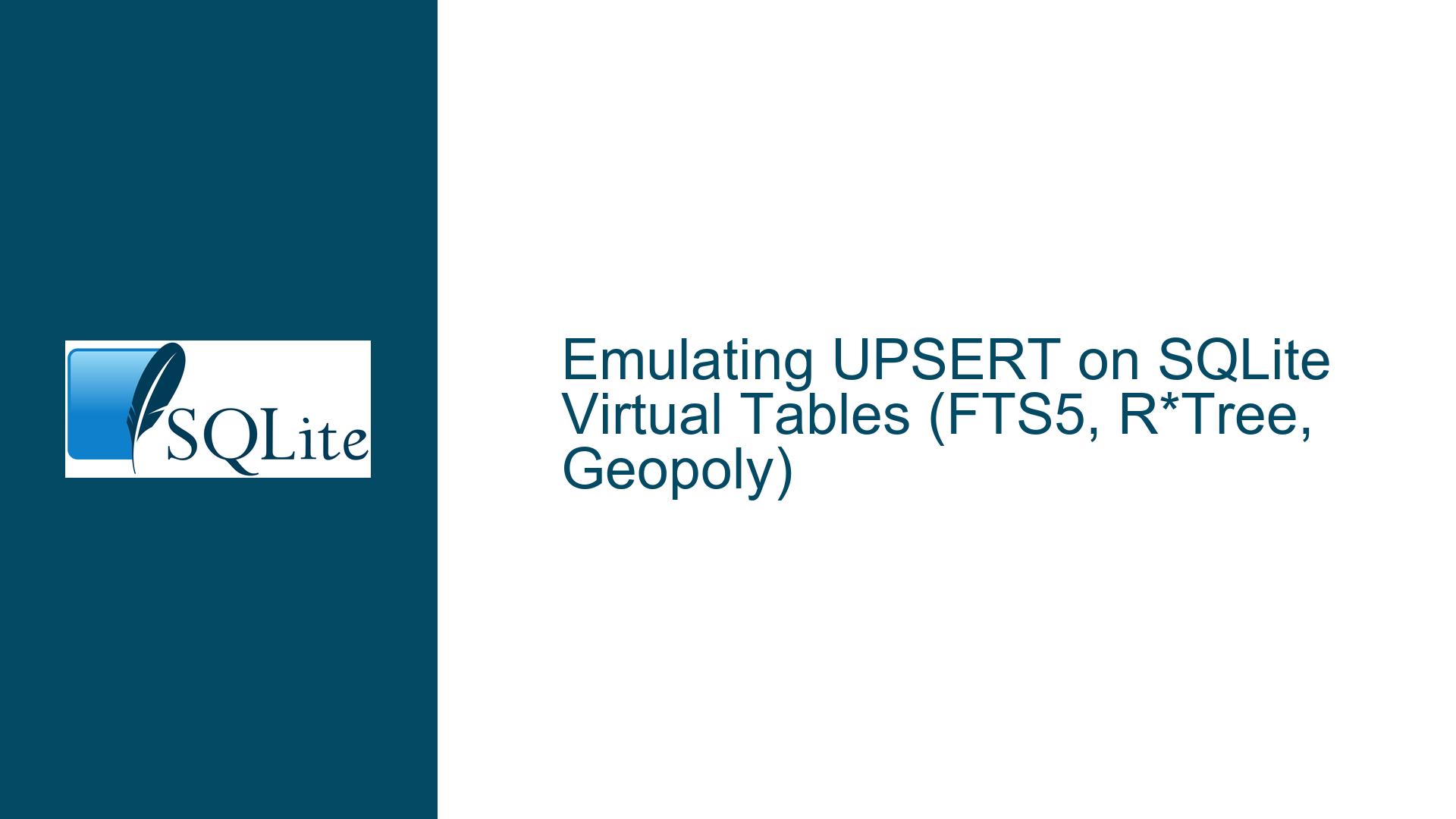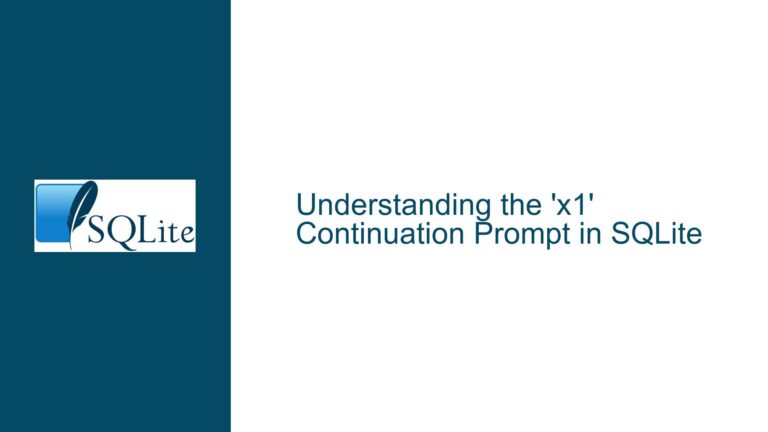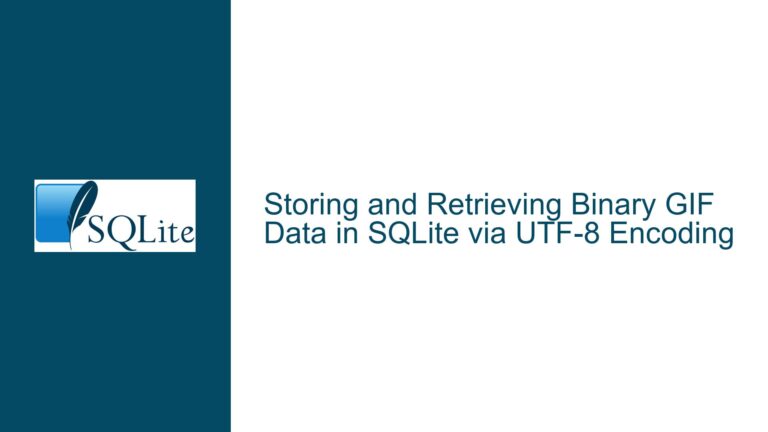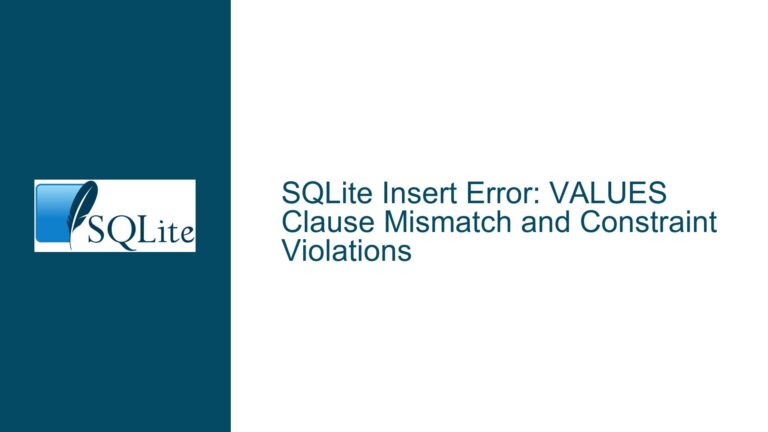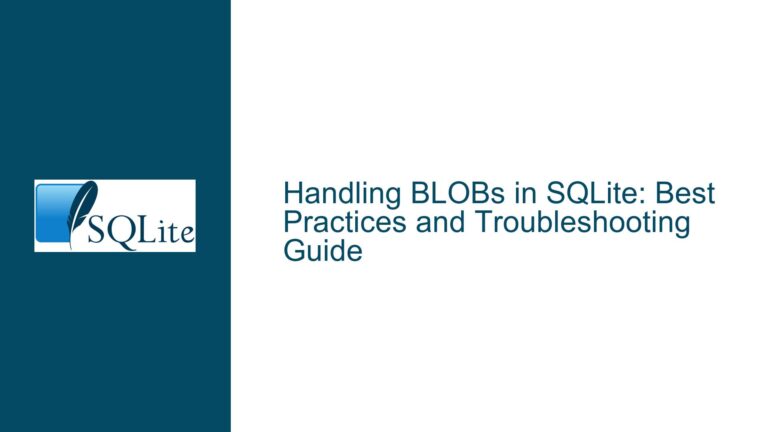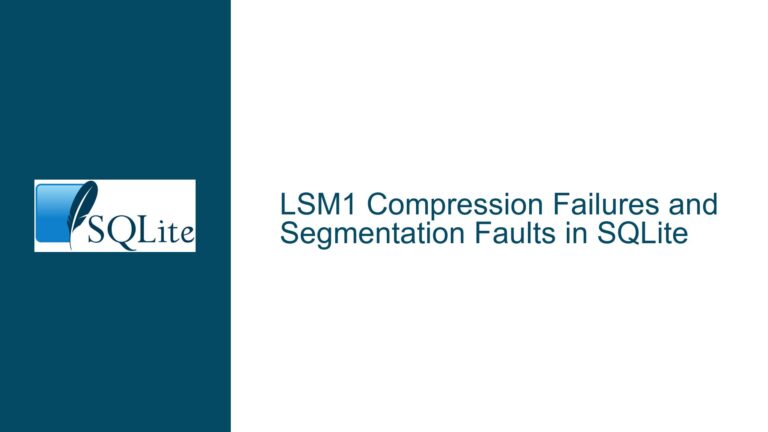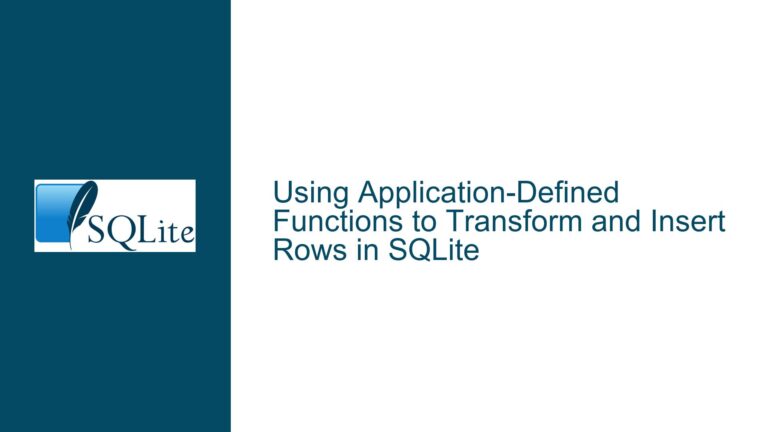Emulating UPSERT on SQLite Virtual Tables (FTS5, R*Tree, Geopoly)
Virtual Table Limitations: UPSERT Constraints and Unique Enforcement
The absence of native UPSERT functionality and UNIQUE constraint enforcement in SQLite virtual tables (specifically FTS5, R*Tree, and Geopoly variants) arises from architectural differences between virtual tables and standard SQLite storage engines. Virtual tables delegate data storage and indexing to external algorithms or structures, which means SQLite’s core engine cannot directly enforce uniqueness or resolve conflicts during write operations. For example:
- FTS5 virtual tables are optimized for full-text search, storing tokens in inverted indexes rather than rows with fixed schemas.
- R*Tree and Geopoly virtual tables handle spatial data using specialized structures (e.g., bounding boxes or polygons), where uniqueness on non-spatial attributes is not inherently managed.
When attempting to perform an UPSERT (UPDATE-or-INSERT) on these tables, the lack of native conflict resolution forces developers to implement manual checks for existing records. This limitation becomes critical when working with columns like fooid in FTS5, where duplicate entries must be prevented to maintain data integrity. The absence of a built-in UPSERT command means developers must choose between suboptimal workarounds or complex application-layer logic.
Challenges with Atomic Operations and Constraint Management in Virtual Tables
The root cause of the UPSERT emulation challenge lies in three interconnected factors:
- Virtual Table Architecture: Unlike standard B-tree tables, virtual tables rely on user-defined module implementations (
xBestIndex,xUpdatemethods). These modules do not natively support constraint enforcement or row-wise conflict detection. For instance, FTS5’sxUpdatemethod appends data to inverted indexes without checking for duplicates. - Transaction Isolation: Even if a manual "check-then-act" UPSERT emulation is implemented (e.g.,
SELECTfollowed byINSERT/UPDATE), concurrent transactions might violate atomicity. Without proper locking, two threads could both determine afooidis absent and proceed to insert duplicates. - Indexing Overheads: Virtual tables like FTS5 prioritize search efficiency over write optimization. Implementing uniqueness checks would require additional indexing structures, which contradicts the design goals of lightweight, specialized virtual tables.
For R*Tree and Geopoly tables, the problem is compounded by their geometric focus. A column like fooid (a non-spatial identifier) has no intrinsic relationship to the spatial data structure, making it impossible for the virtual table module to enforce uniqueness without custom logic.
Strategies for Managing Upserts and Preventing Duplicates in Virtual Tables
Step 1: Leverage External Uniqueness Enforcement
For FTS5 tables, use an external "content table" to enforce uniqueness. This involves:
- Creating a standard SQLite table with a
UNIQUEconstraint onfooid:CREATE TABLE foo_content ( fooid INTEGER PRIMARY KEY, footext TEXT, UNIQUE(fooid) ); - Configuring the FTS5 table to mirror this content table:
CREATE VIRTUAL TABLE vfoo USING fts5( fooid UNINDEXED, footext, content='foo_content', content_rowid='fooid' ); - Performing UPSERTs on the content table using standard
INSERT OR REPLACEorON CONFLICTclauses. Changes tofoo_contentwill automatically propagate tovfoo.
Step 2: Use Transactional Atomicity for Manual UPSERTs
When external content tables are not viable (e.g., R*Tree or Geopoly), wrap manual existence checks and writes in explicit transactions:
BEGIN IMMEDIATE;
-- Check for existing fooid
SELECT COUNT(*) FROM vfoo WHERE fooid = ?;
-- Conditional INSERT/UPDATE based on result
COMMIT;
The IMMEDIATE transaction lock prevents concurrent writes, ensuring atomicity. For R*Tree, replace vfoo with the spatial table and adjust the WHERE clause to reference spatial columns.
Step 3: Delete-Before-Insert for Idempotent Writes
If uniqueness is only required on insertion (not update), use a DELETE statement before INSERT:
DELETE FROM vfoo WHERE fooid = ?;
INSERT INTO vfoo (fooid, footext) VALUES (?, ?);
This ensures that subsequent inserts with the same fooid do not create duplicates. However, this approach is lossy—any existing data associated with fooid will be permanently removed.
Step 4: Application-Layer Caching for Read-Modify-Write Cycles
Maintain a cache (e.g., in-memory hash table) of recently accessed fooid values to reduce redundant database queries. Before initiating a transaction, check the cache for fooid existence. This minimizes round-trips to the virtual table but requires cache invalidation logic to handle external modifications.
Step 5: Trigger-Based Synchronization (Advanced)
For Geopoly or R*Tree tables, use triggers on related standard tables to mirror changes to the virtual table. For example:
CREATE TRIGGER rtree_upsert AFTER INSERT ON main_table
BEGIN
DELETE FROM rtree_table WHERE id = NEW.id;
INSERT INTO rtree_table VALUES (NEW.id, NEW.minX, NEW.maxX, ...);
END;
This ensures that writes to main_table atomically update the virtual table.
Final Considerations:
- Performance Tradeoffs: Manual UPSERT emulation increases write latency, especially for high-throughput applications. Benchmark with representative workloads.
- Concurrency Controls: Use SQLite’s locking modes (
BEGIN IMMEDIATE,BEGIN EXCLUSIVE) to prevent race conditions. - Virtual Table Extensions: Explore custom virtual table modules (via SQLite’s C API) to implement native UPSERT logic, though this requires significant development effort.
By combining external uniqueness enforcement, transactional guards, and idempotent write patterns, developers can approximate UPSERT behavior in SQLite virtual tables while mitigating the risk of duplicates.
